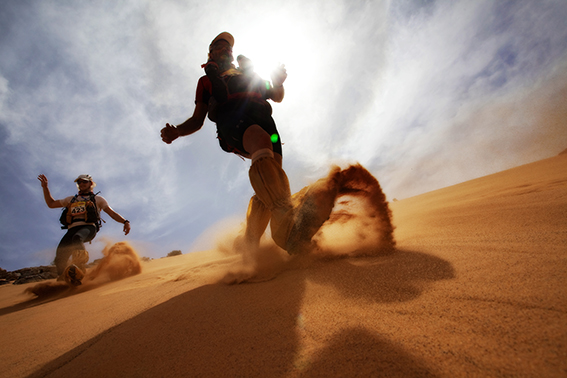Ranked by the Discovery Channel as the toughest footrace on earth, Marathon de Sable (MdS) will kick off on April 6. It is now in its 28th year, as stated in MdS website, marathondessables.co.
The race is a grueling, multi-stage adventure through formidable landscapes in one of the world’s most inhospitable climates – the Sahara Desert in southern Morocco. Participants run across saltpans, desert mounts, derelict towns, and occasionally through sandstorms.
The race attracts in the region of 1,300 international participants who will spend six days crossing 250 km of difficult desert terrain (nearly equal to six regular marathons). The ultra-marathon is open to individuals and teams of individuals, amateur and elite runners, coming from all over the world.
MdS is growing in popularity every year, and so securing a place in the race isn’t easy: subscriptions to the 2016 race are already fully booked – racers pre-register years in advance.
The rules require participants to be completely self-sufficient from breakfast time on April 6 until lunch on April 12. The organizers provide water refills and tents for nighttime sleeping, but racers must carry all other personal supplies and equipment in backpacks as they trek.
This includes food, which is no doubt a daunting prospect since participants must pack enough nutrition to replace 3,000-4,000 calories per day and food choices must withstand daytime temperatures that hover at 50°C. It’s all about weight balancing and easy prep. This race is as much about project management as it is about physical endurance. Survivors must manage strength, food and water needs for a week.
How It Began
It began in 1984 when a French concert promoter set out for an epic walk across the Sahara desert, with a goal of covering 300 km carrying everything he would need on his back. Patrick Bauer survived and, transformed by his experience, and decided to organize an event that would replicate it for others. After two years of logistics and fundraising, he launched the first ‘Marathon of the Sands’ in 1986, attracting 186 competitors. The event has matured over 30 years; the King of Morocco Mohammed VI now opens the race for the thousands of racers, organizers and media that descend on his kingdom.
MdS founder Bauer and his wife Marie set up the Solidarite Foundation in Ouazarzate, south Morocco, to encourage sports development and education. They teach women to read and write and how to adopt best practice with regards to hygiene and healthcare. Children take part in sports camps, including excursions to the seaside where they learn to swim and sail.
Villages along the race path are supported with donations of books, agricultural tools, water wells and water purification systems.
Litterers Are Penalized
Over the course of the event, racers consume over 120,000 liters of drinking water, distributed in bottles each marked with the racers’ official competition number. It’s forbidden to dump empty bottles or their caps along the race route. Litterers are tracked and penalized on race points. To make sure that no rubbish is left at overnight camps or along the race course, a sweep-up crew follows race progress. Other than by tracking footsteps, it is almost impossible to find where the camps have been set up.
A slot in the race doesn’t come cheap either. Entry costs for this year’s race was over $5,500 for each entrant and almost $5,800 for team entrants.


